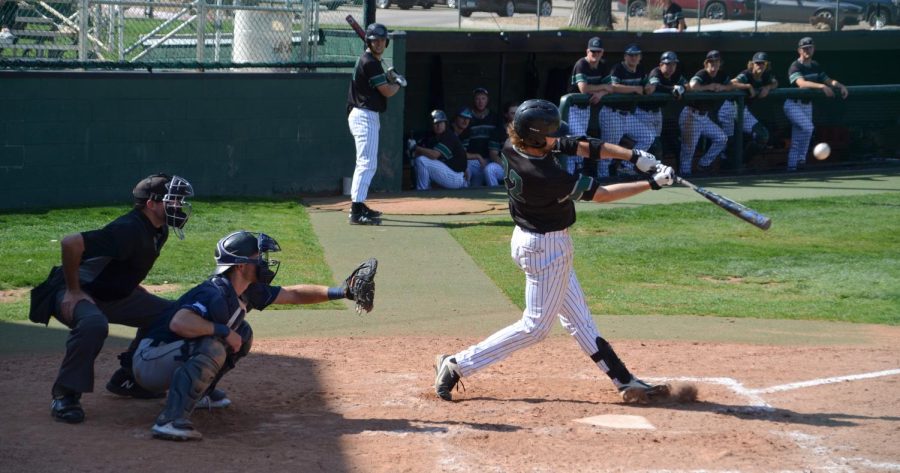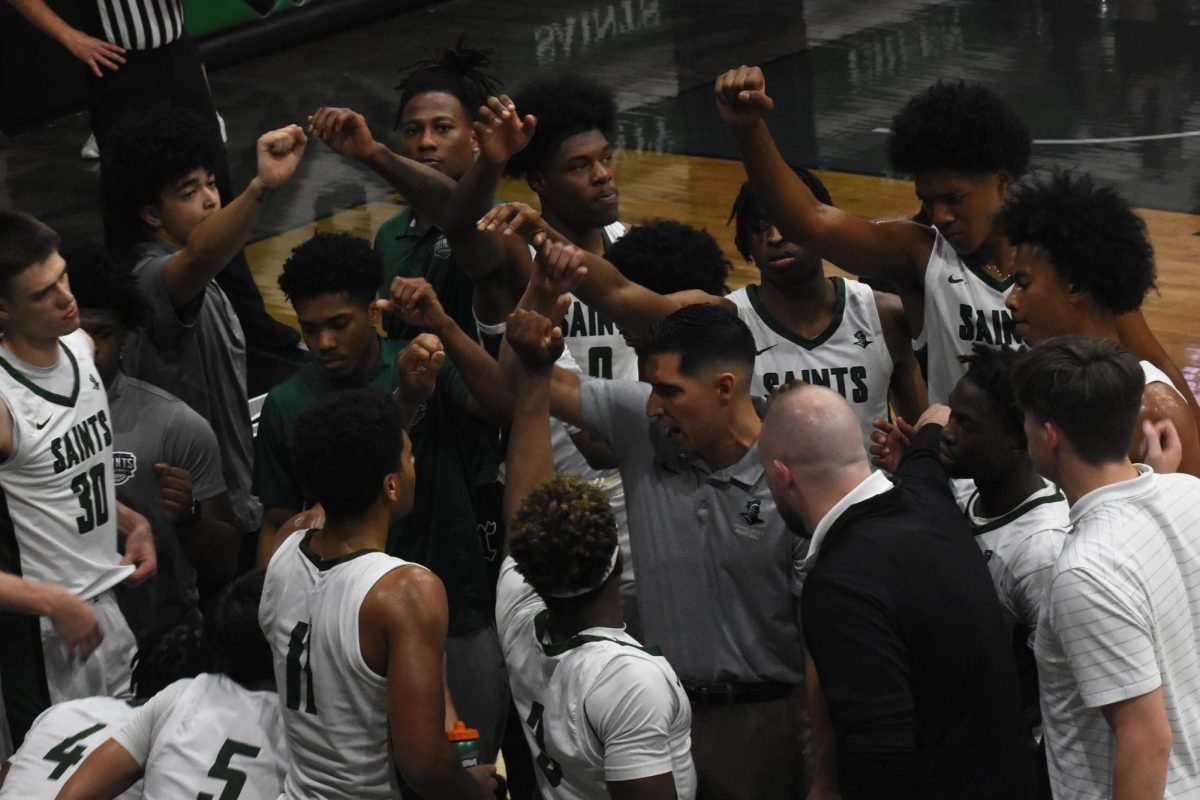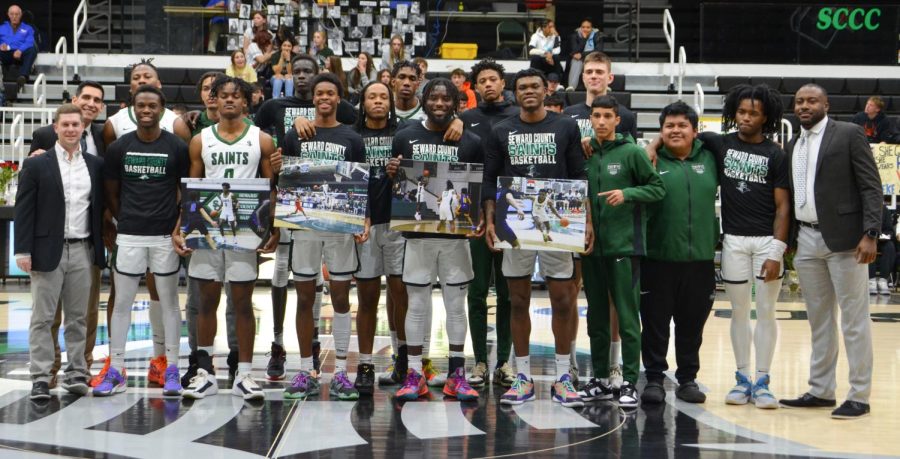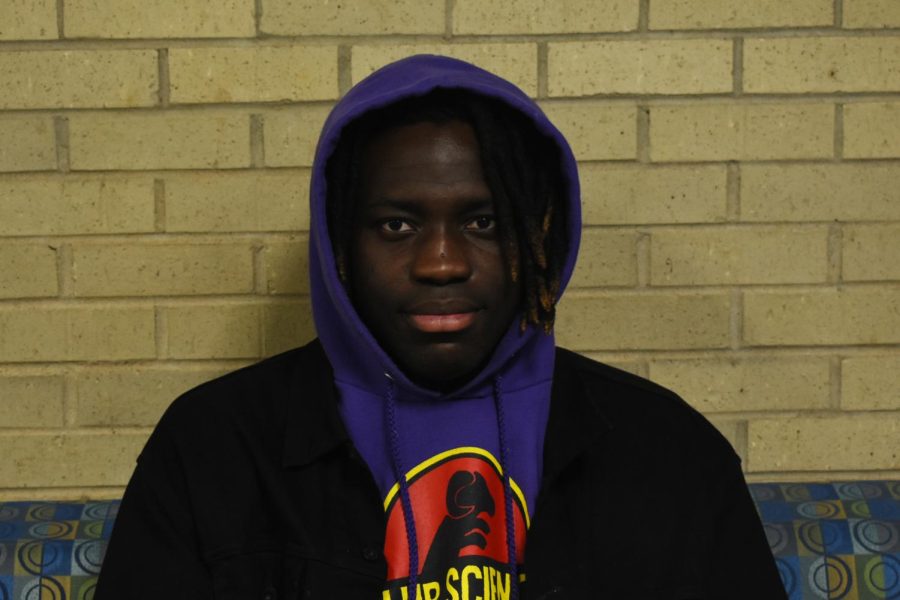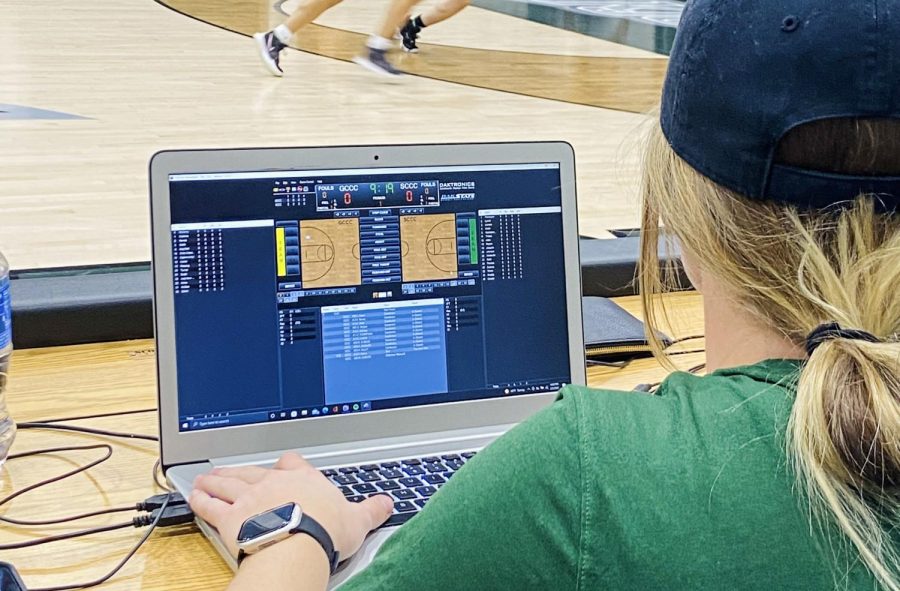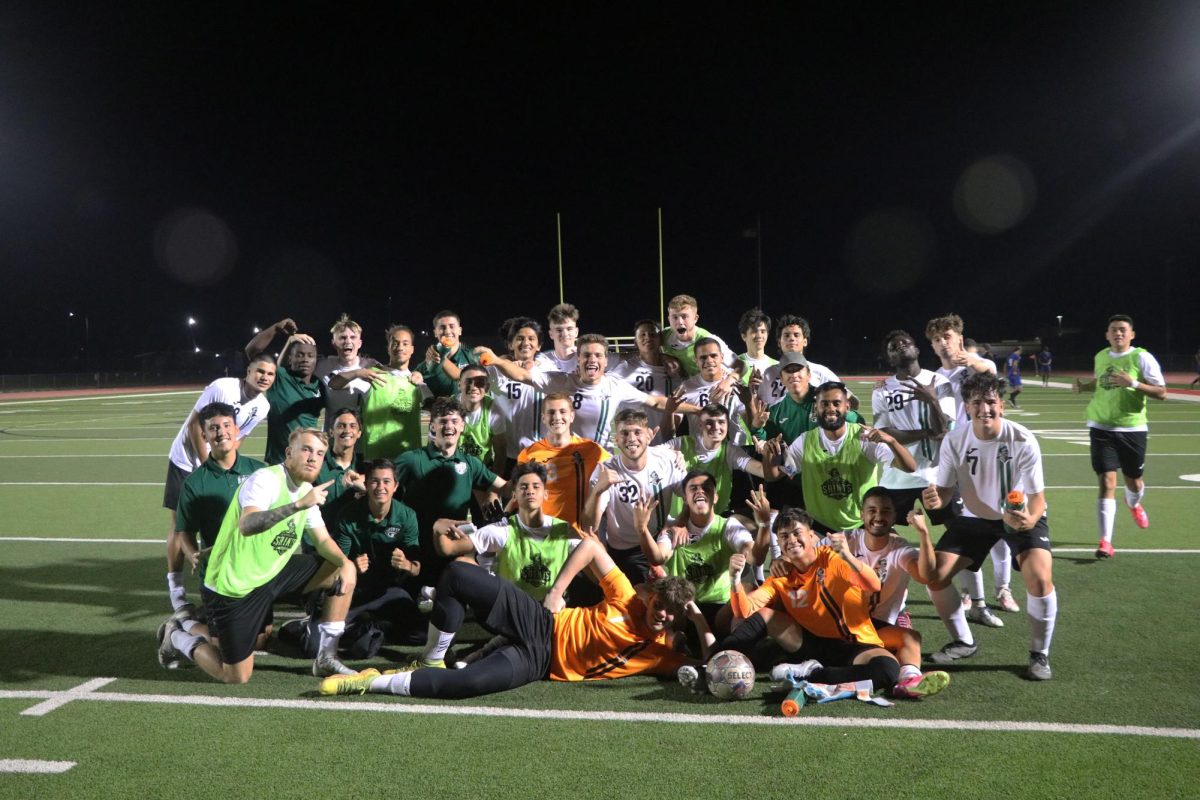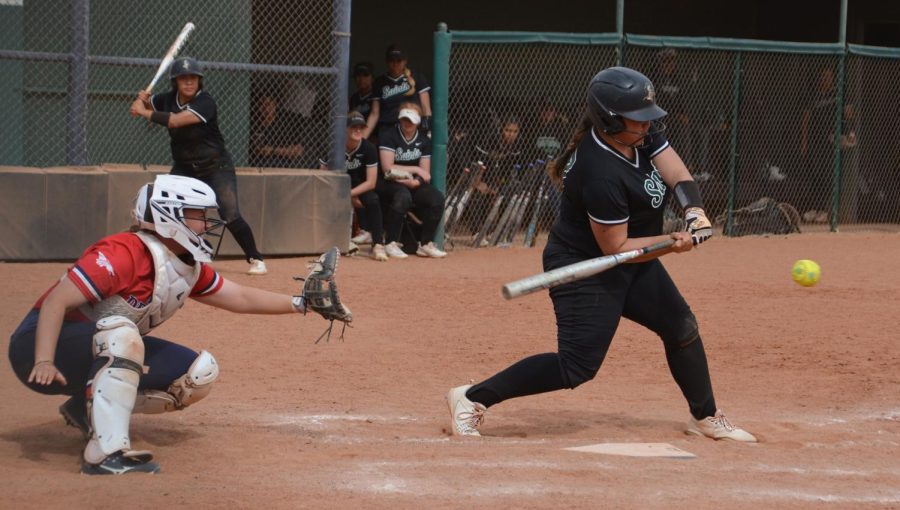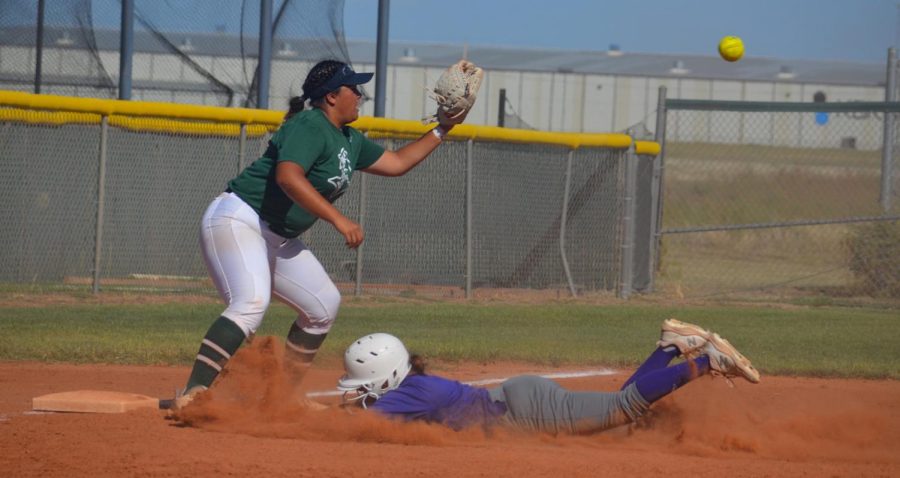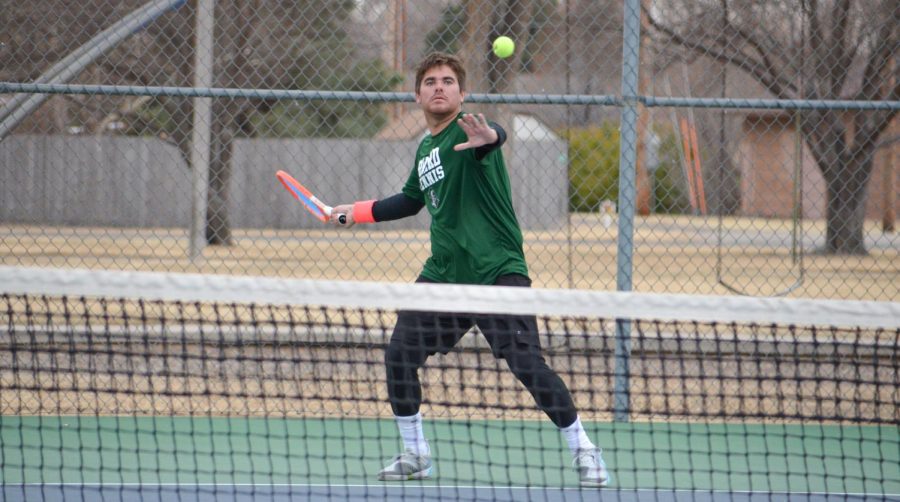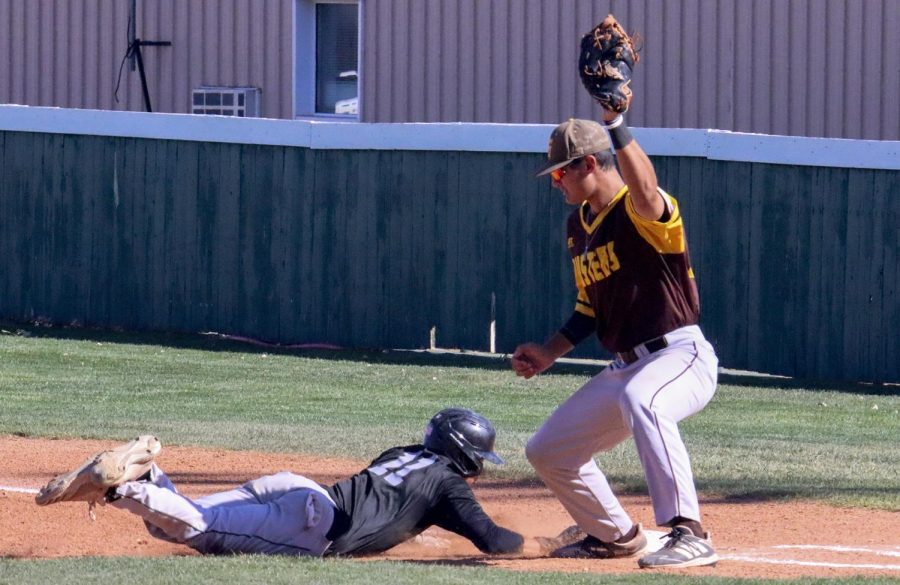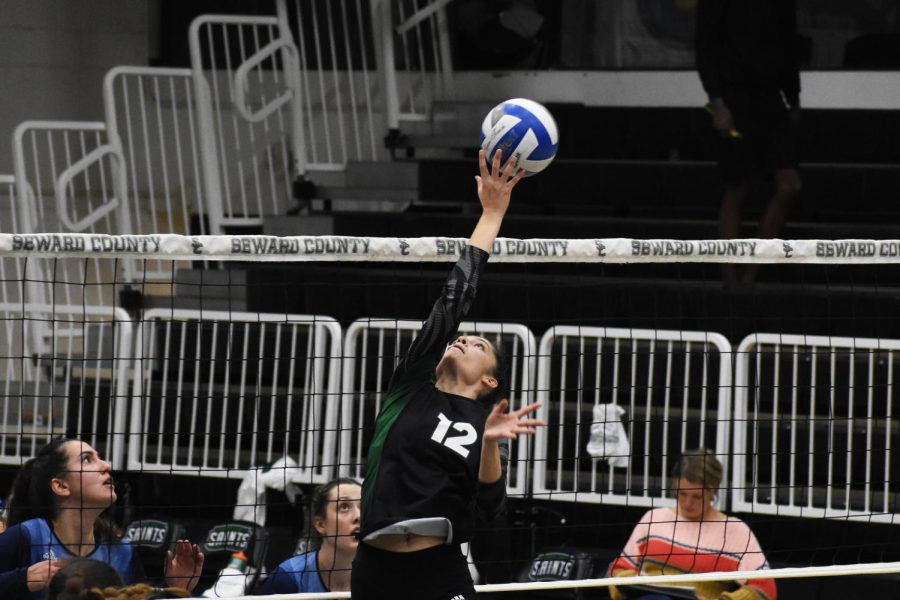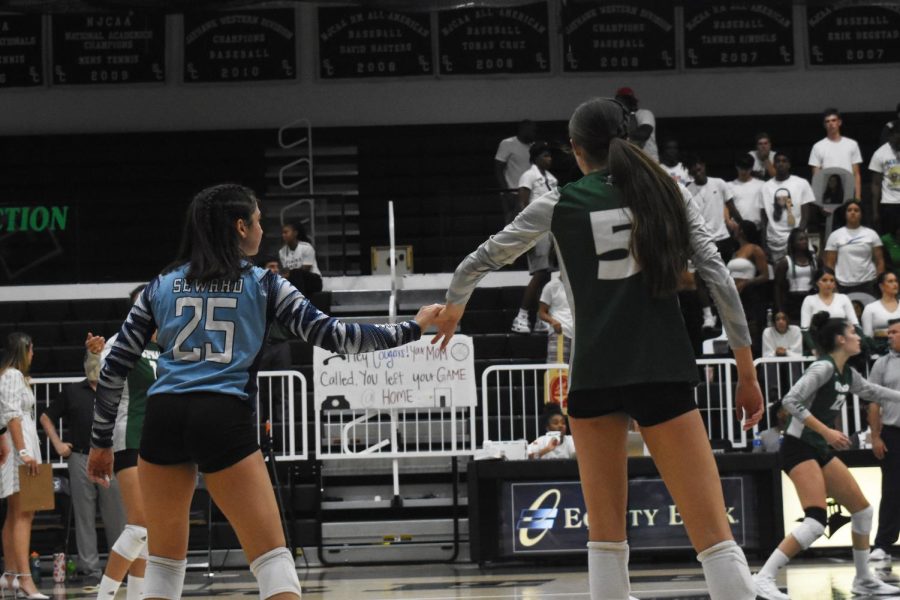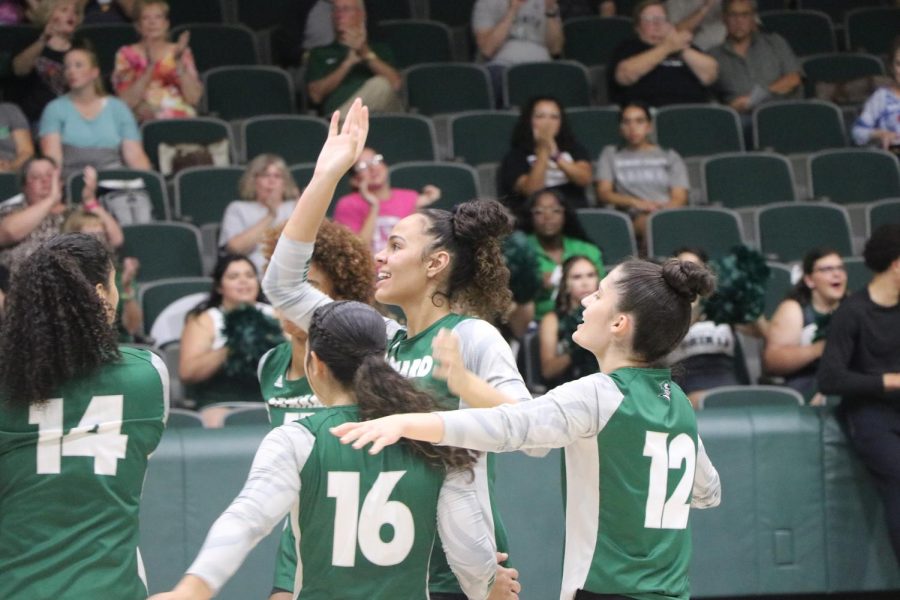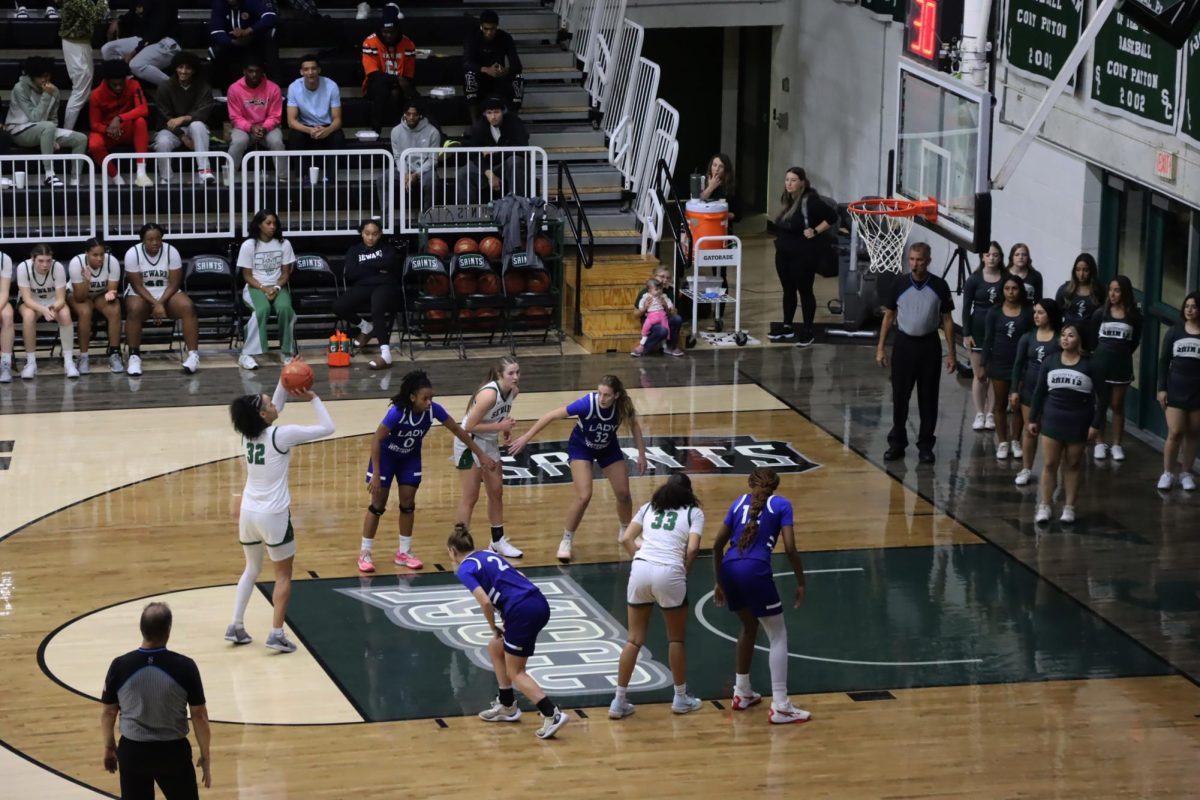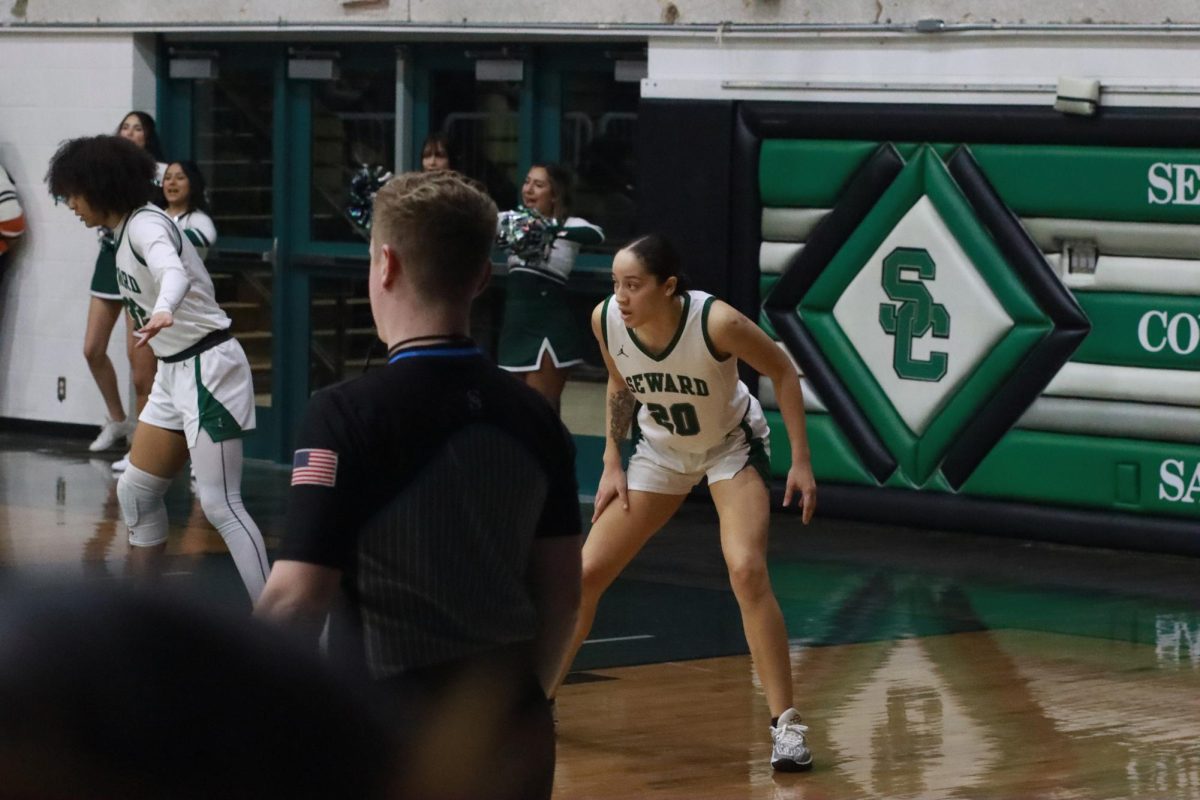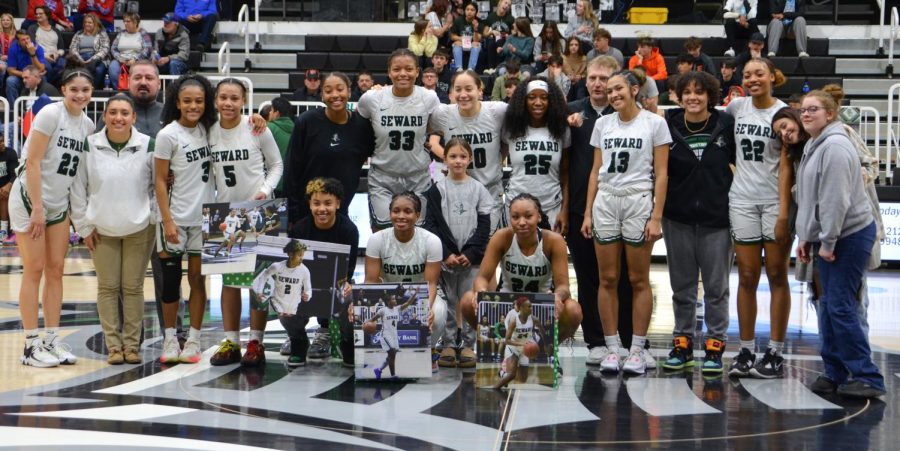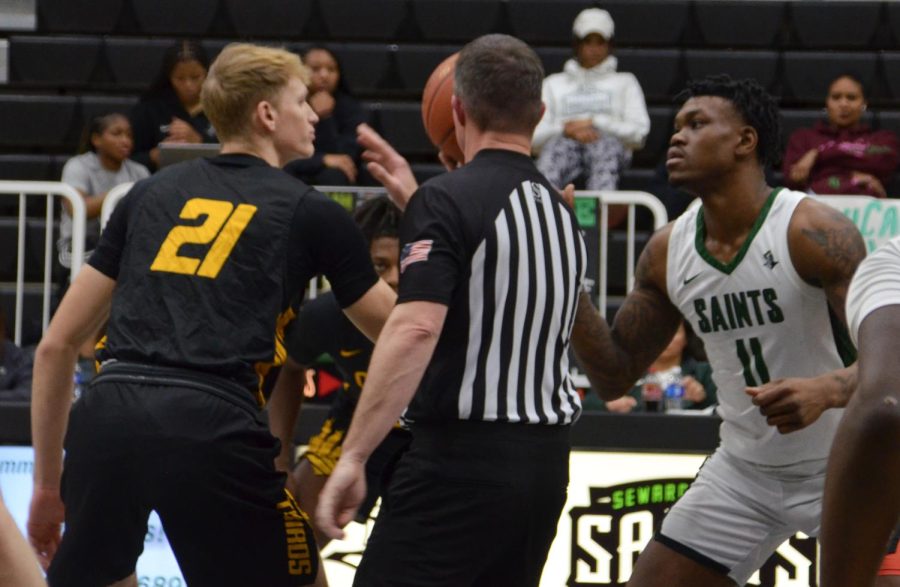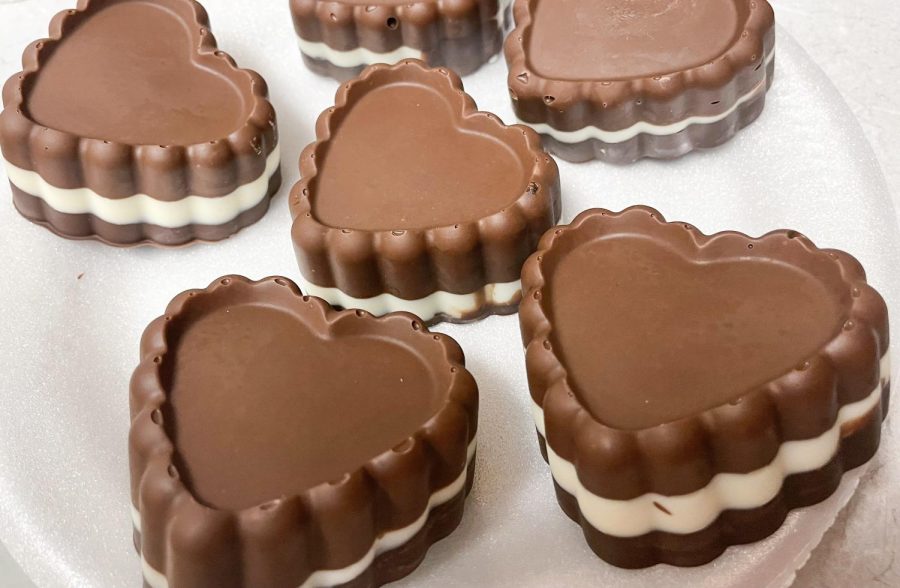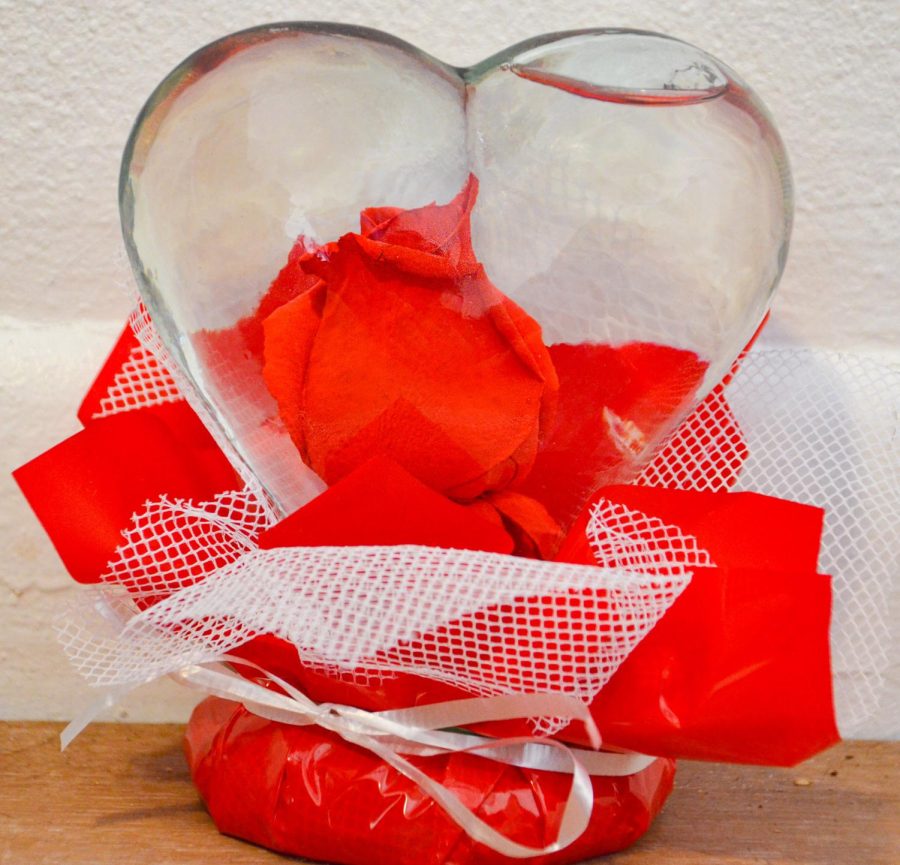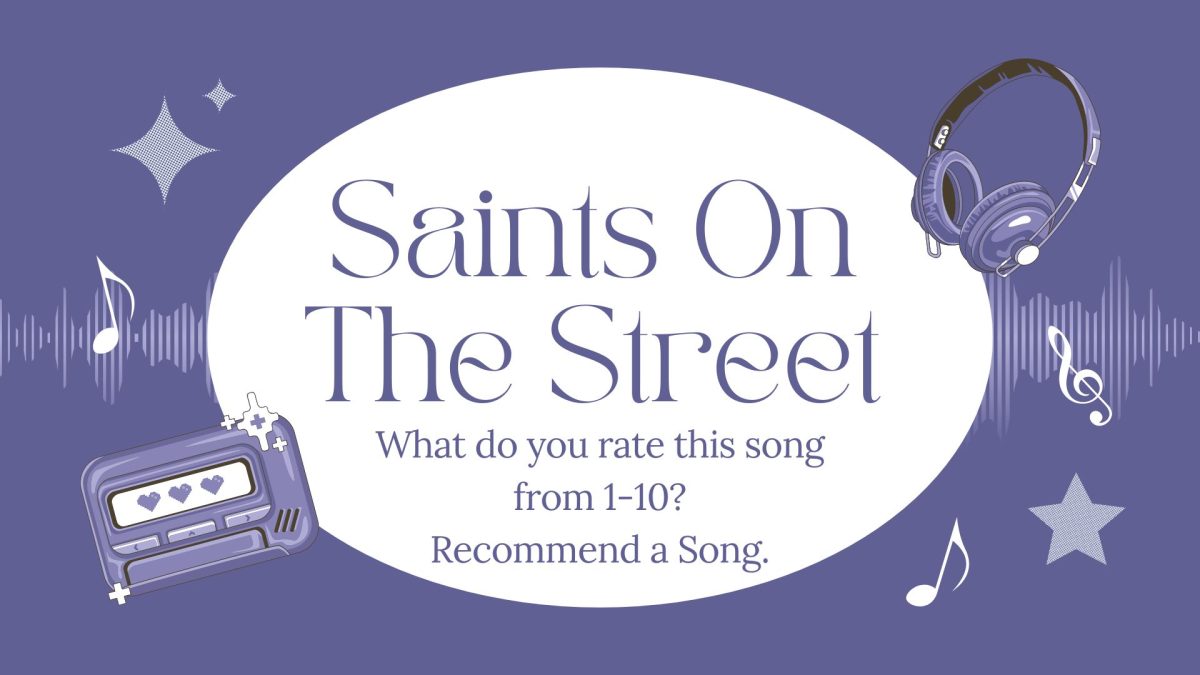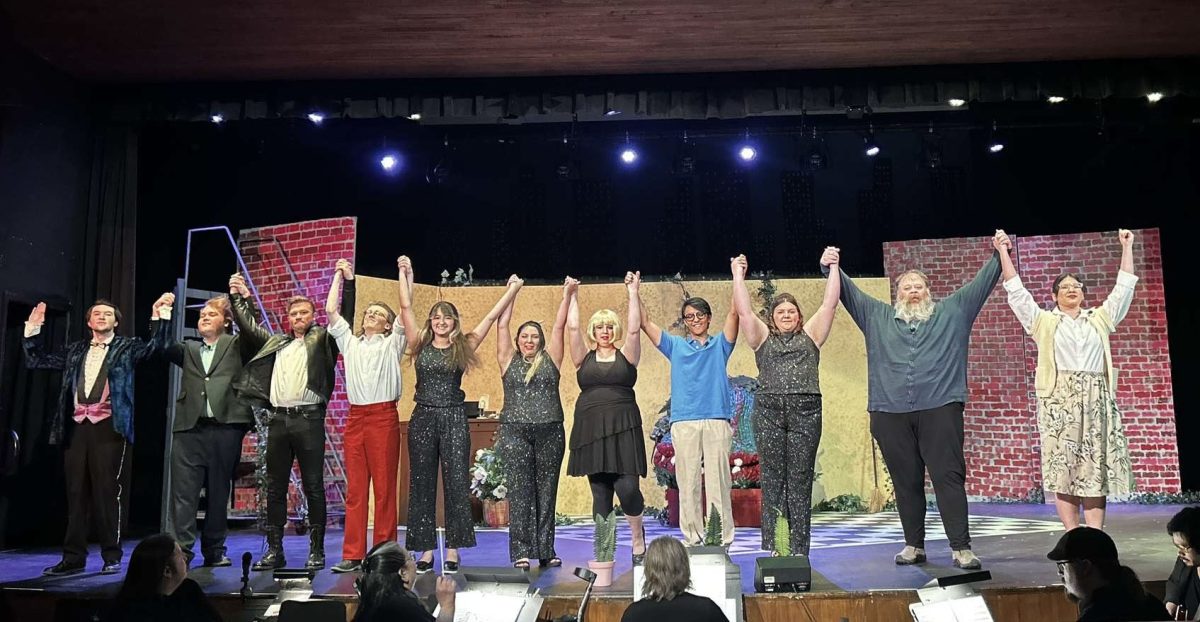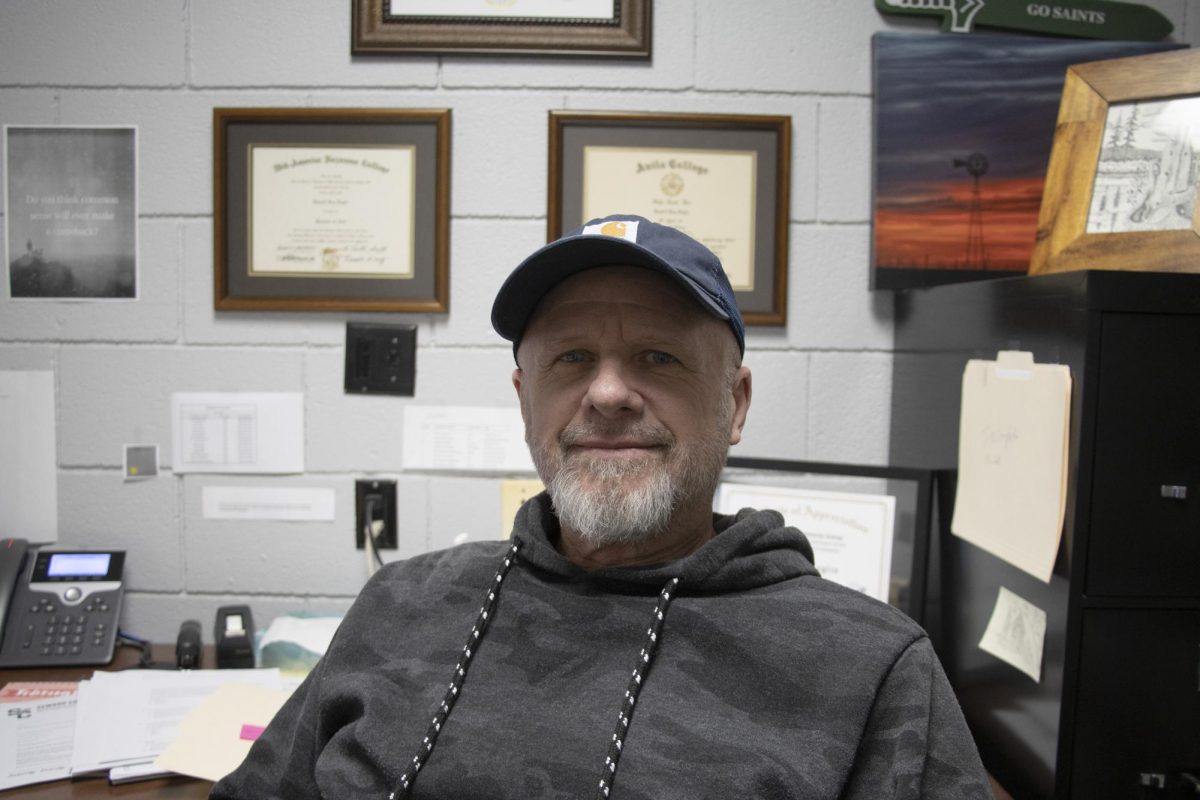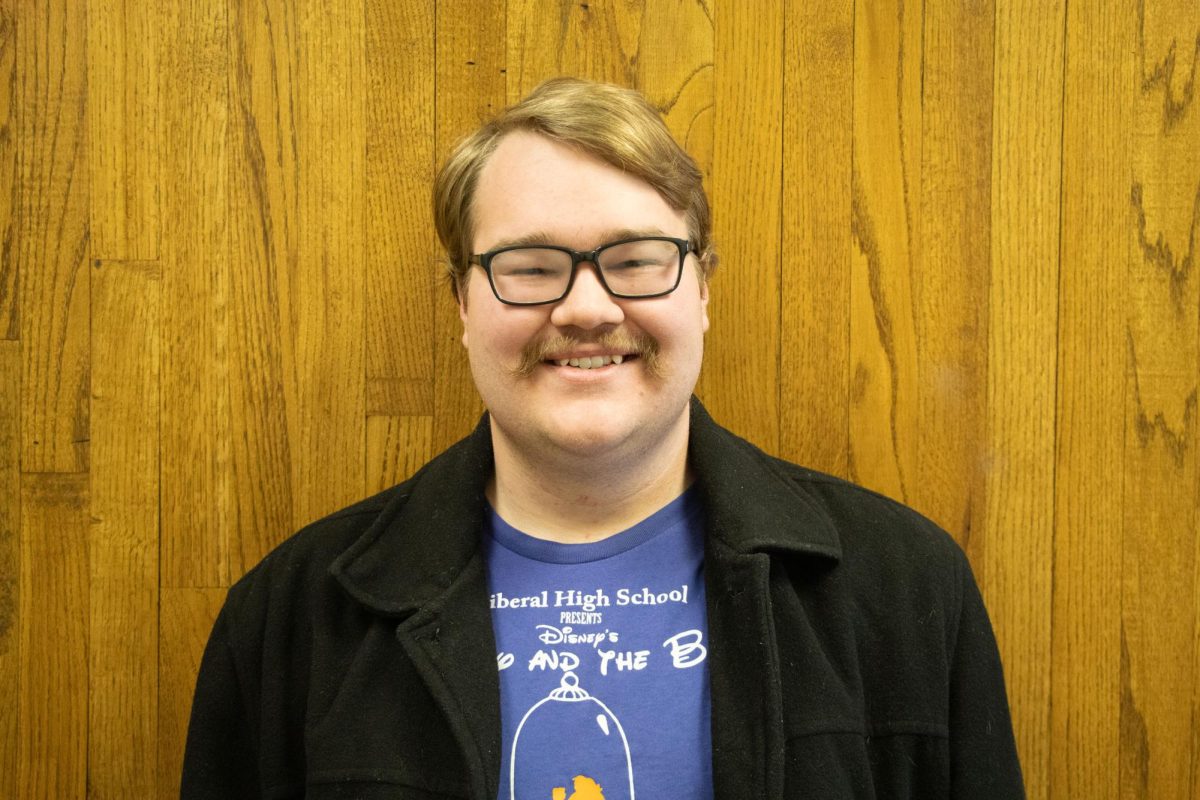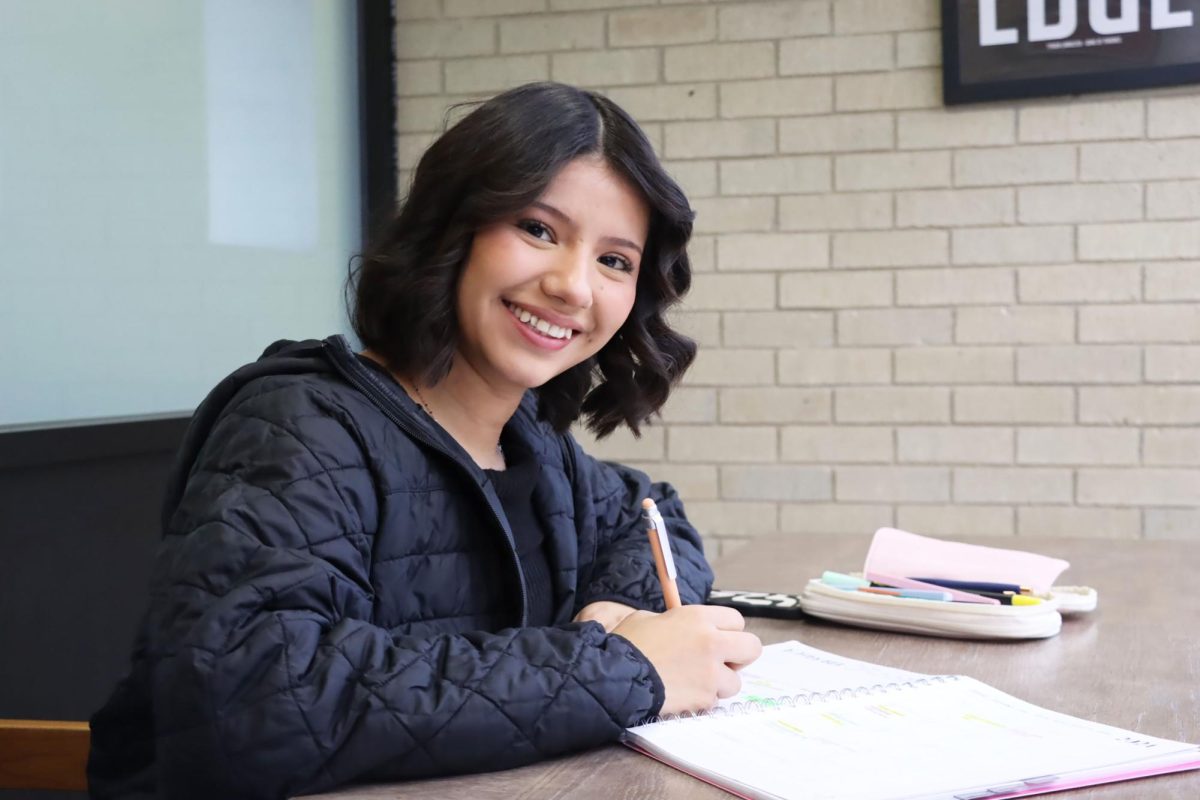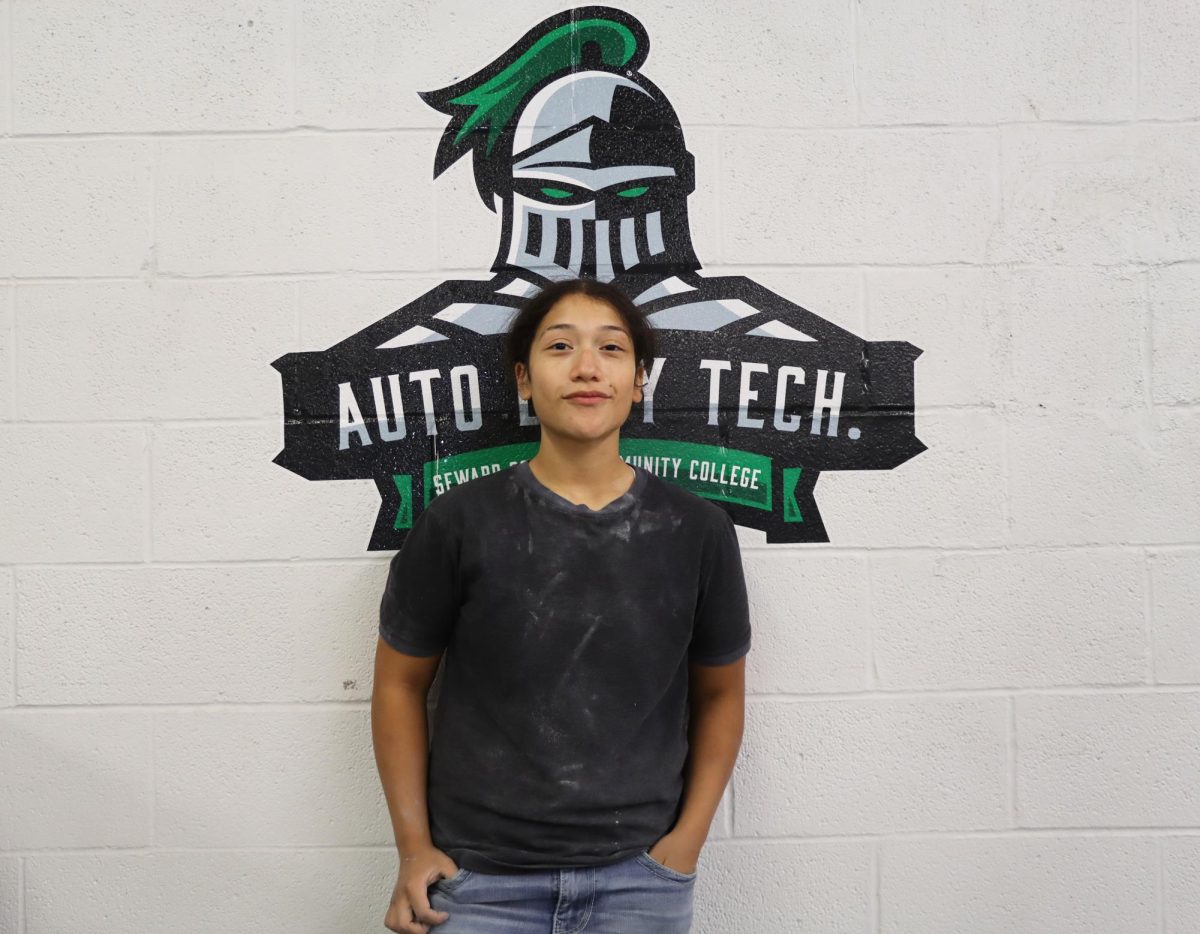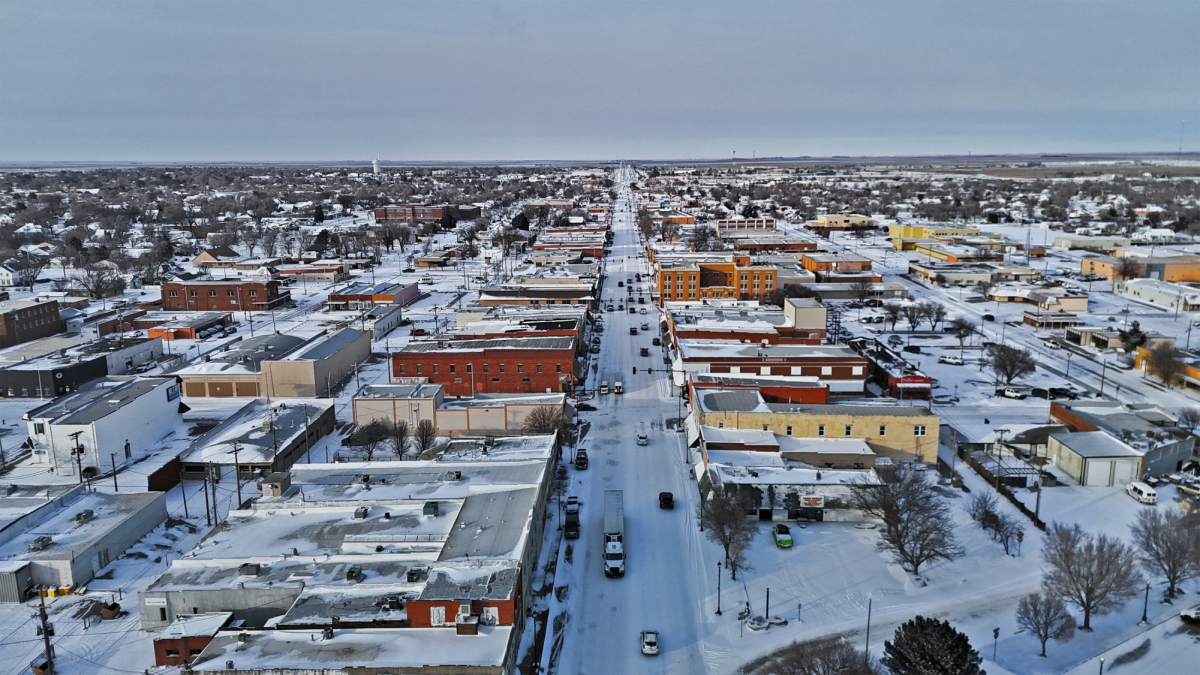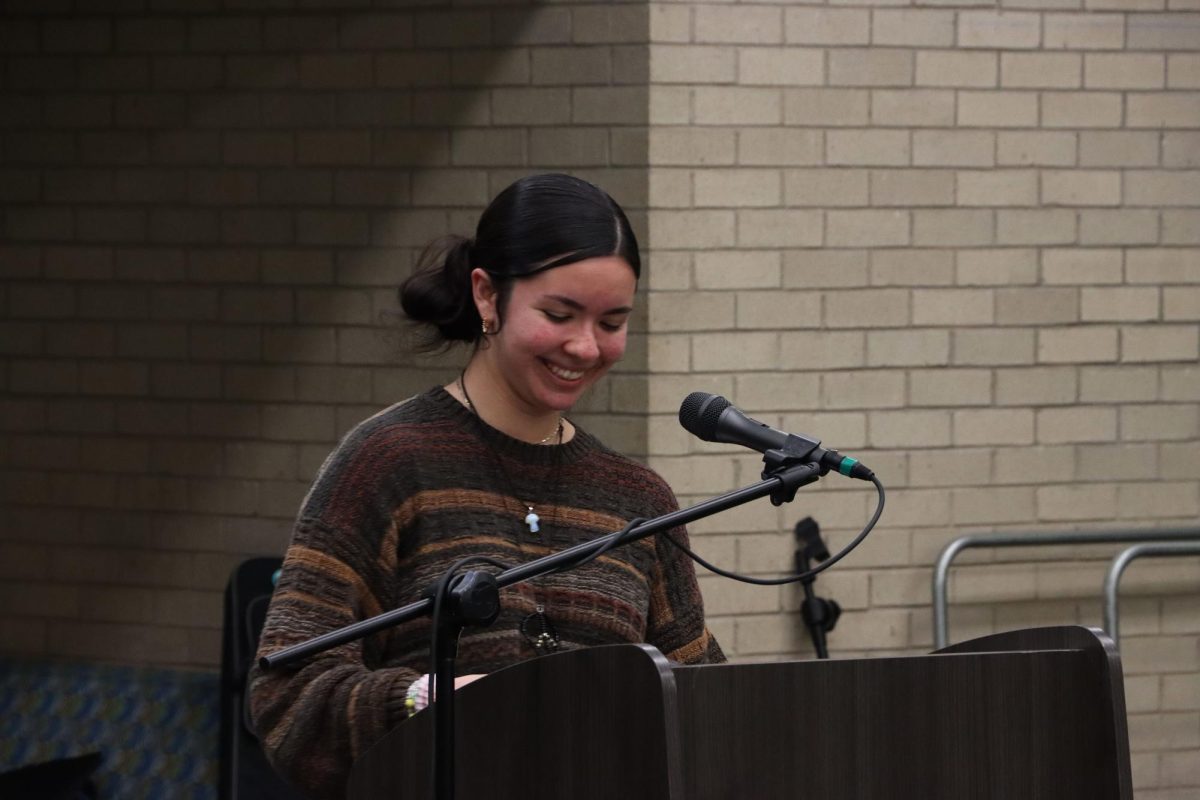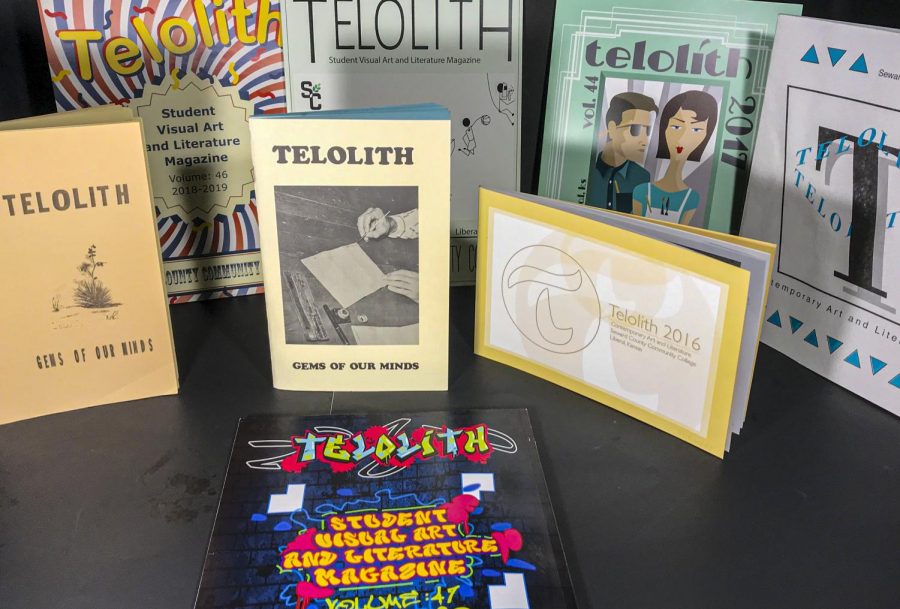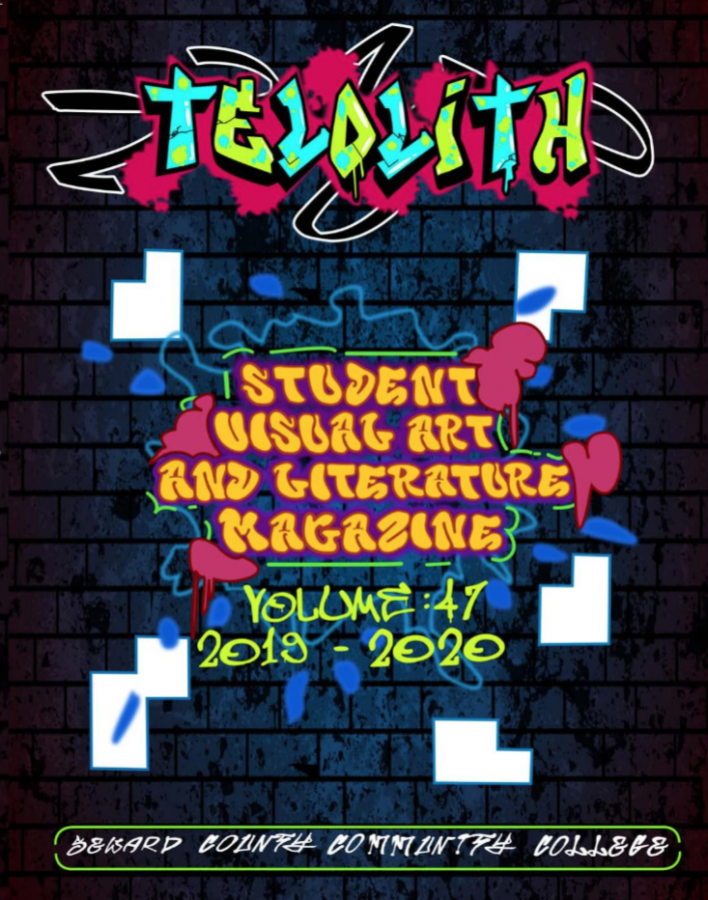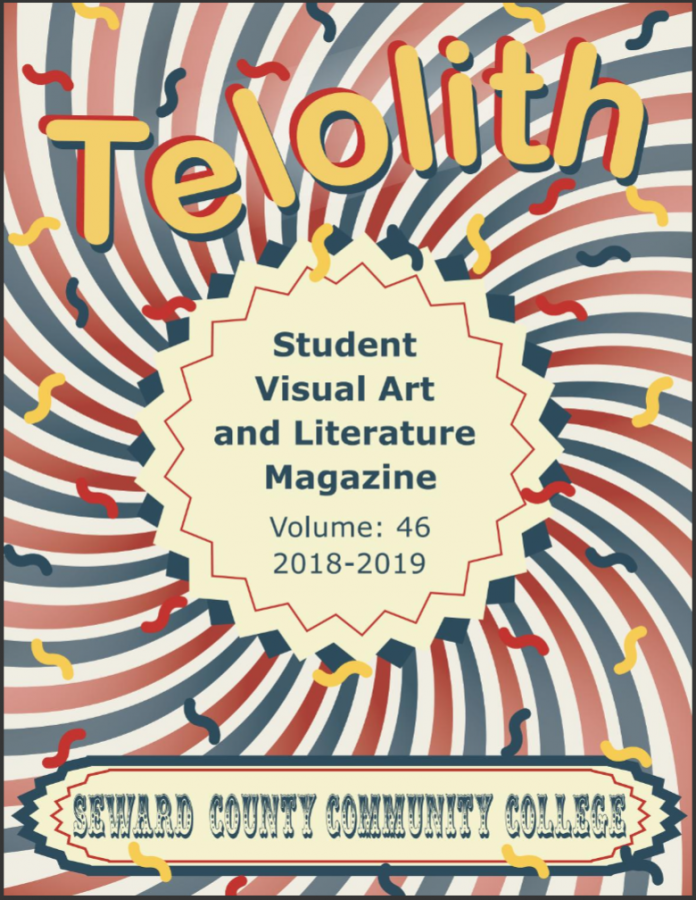Glassblower – or gaffer– Gary Marsh teaches students art skills near 3,000-degree heat caused by glass-melting furnaces. Student hands give shape to fragile works of art at the glassblowing studio.
Marsh, adjunct instructor at Seward, has worked with glassblowing for 18 years, nine teaching at Liberal High School. He teaches art classes to high school students, and glassblowing and photography to SCCC/ATS students at night. According to Marsh, Liberal High School is the only high school in the state with a glassblowing program. Seward is the only two-year college in the state of Kansas that offers glassblowing, and Emporia State University is the only four- year college with glassblowing.
“I like how you can create art out of human breath,” Marsh said.
Hanging from a metal tube, the molten glass is given its first shape by blowing a bubble throughout the blowpipe. Further shaping is done with the aid of human breath, hand tools –such as wooden blocks and metal pliers– and at times gravity. Glassblowing is not so different from other types of art, even though the glass itself is never touched with bare hands. The shape is given with hand tools and the creativity of the glass- blower.
Centering the molten glass on the blow pipe is crucial for the outcome of the glass piece. Like a juggler, glassblowers keep the piece centered, and away from the clutches of gravity.
This is a rapid process from beginning to end, as glass cools down rapidly and once the glass warms past a certain temperature, the piece cannot be shaped. Throughout the use of a gloryhole, a furnace used to reheat glass, the glass is kept at a malleable temperature. This process is repeated several times.
Marsh says that he likes how it takes approximately 40 minutes to create a glass piece. However, the time to create a glass batch takes much longer.
Glass is created from silica sand. Molten temperatures liquefy the quartz sand, then a clearing agent is applied and crystal clear glass is created. The glass is kept at a constant temperature through- out the school year in gas furnaces.
“It is like playing with fire, but you create pieces of art,” SCCC/ATS student
Fabiola Fraire, said. Fraire has been in glassblowing classes for two years. “You can create piece after piece in the same way, but the final piece will always be different in color, shape, or how light is reflected,” Fraire said. Glassblowing is different from other art types as it is quite dangerous due to fire and the high temperatures of the molten glass. Personal safety and awareness of other students working at the glassblowing studio are important. Stu- dents usually work in pairs, as at times two sets of hands are required. Glassblowing students traveled to Oklahoma City in October, in order to learn more about the craft of glassblowing.
Students saw the making of glass ornaments, bases and paperweights at Blue Sage Glass Studio. They also visited the private glass studio of Toby McGee. McGee creates sculptures of glass, with unique techniques to create impressions on the glass surface.
Glassblowing is offered in the spring semester; however, enrollment is limited.



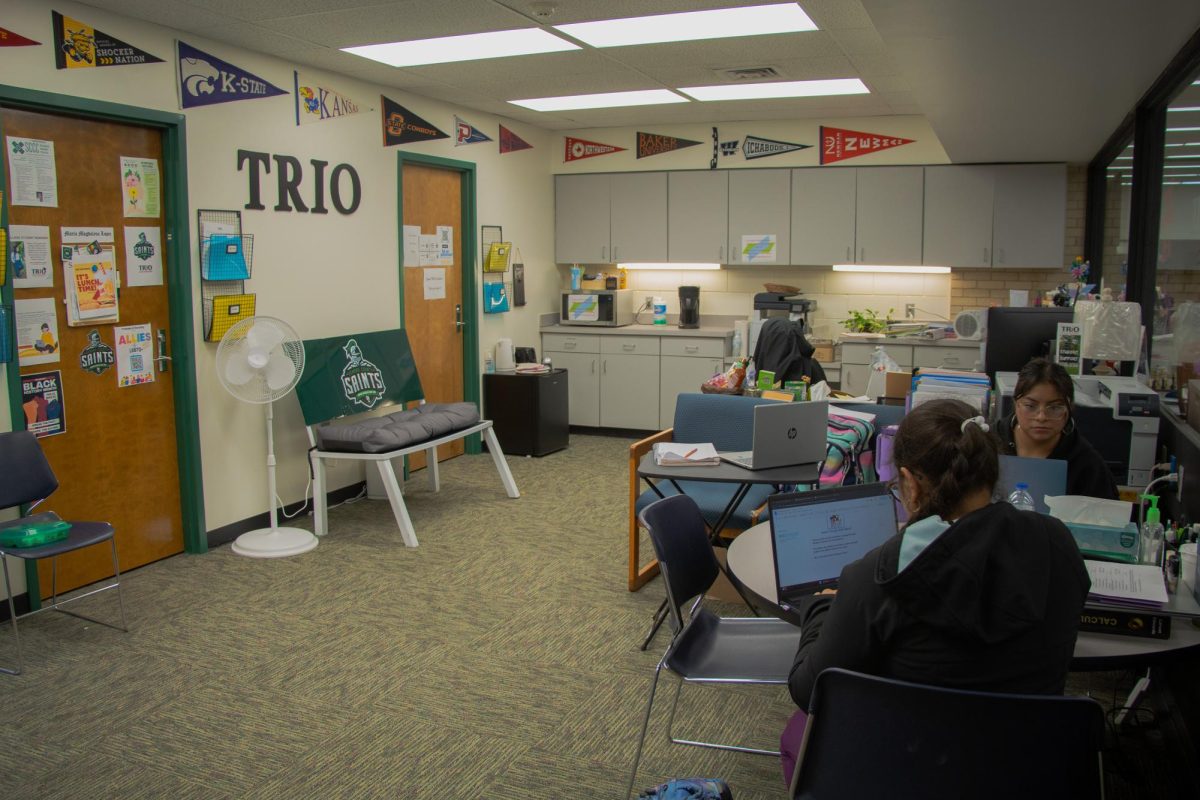
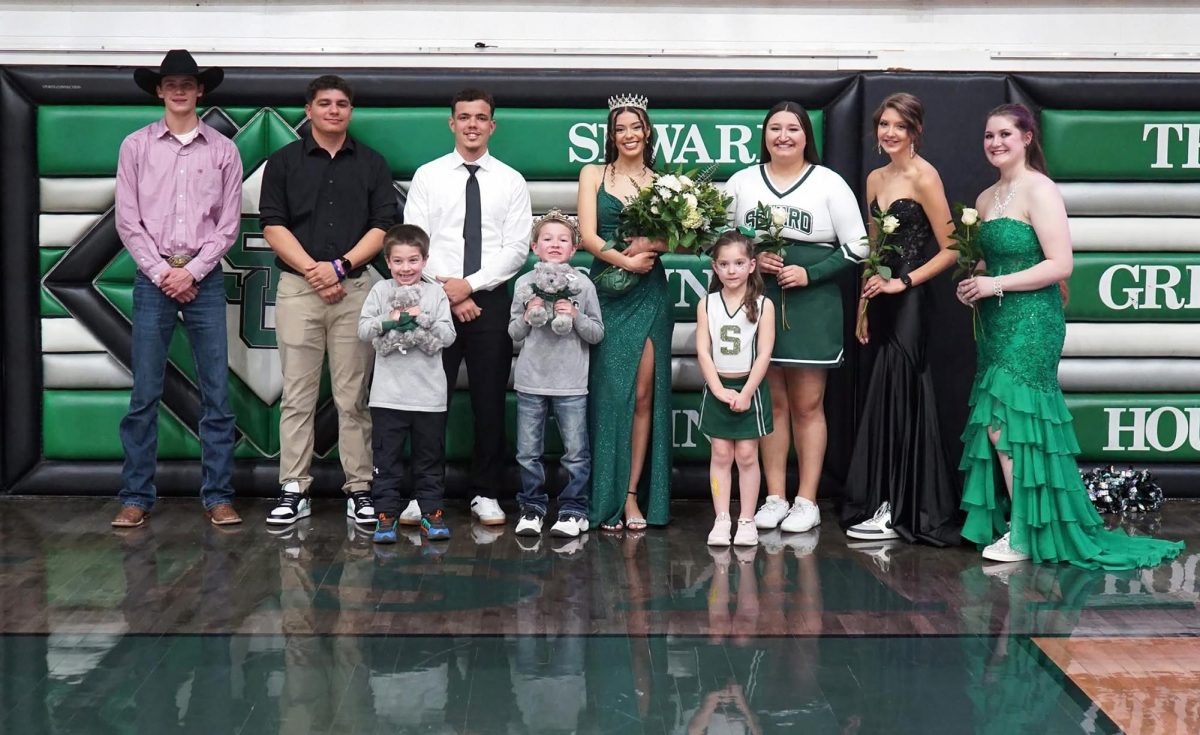
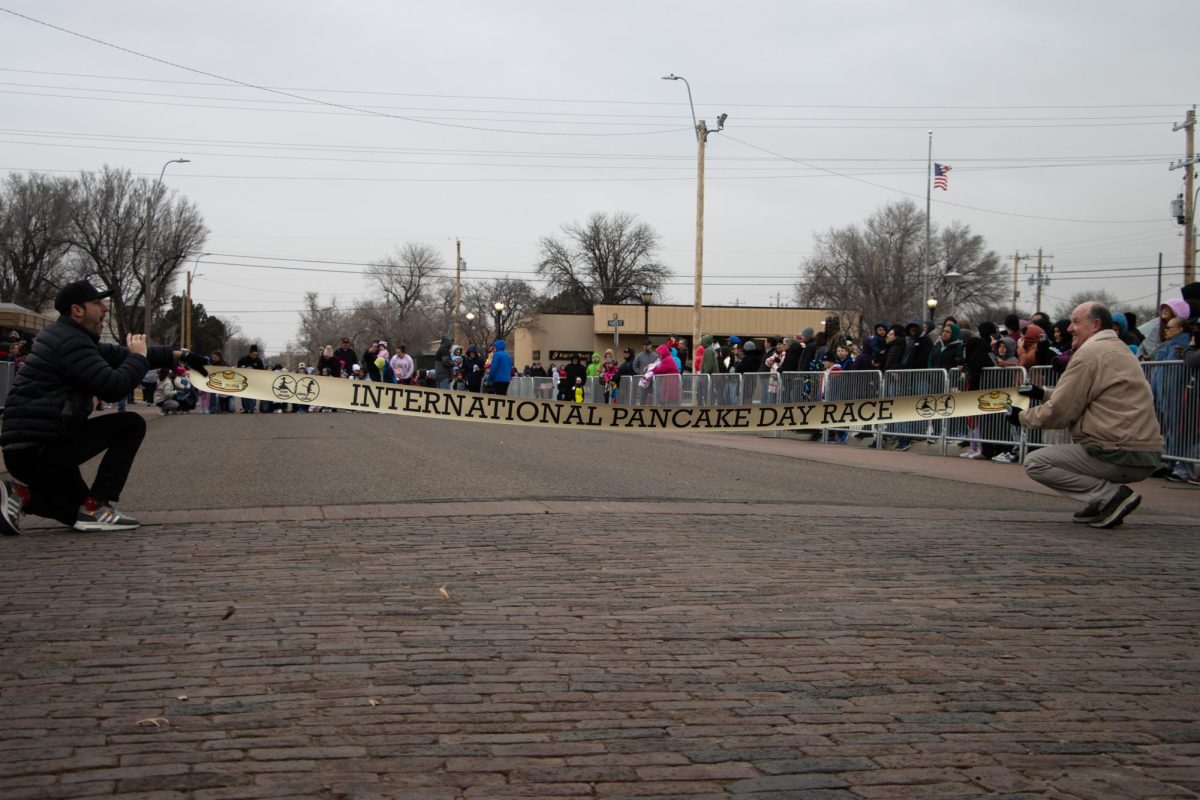
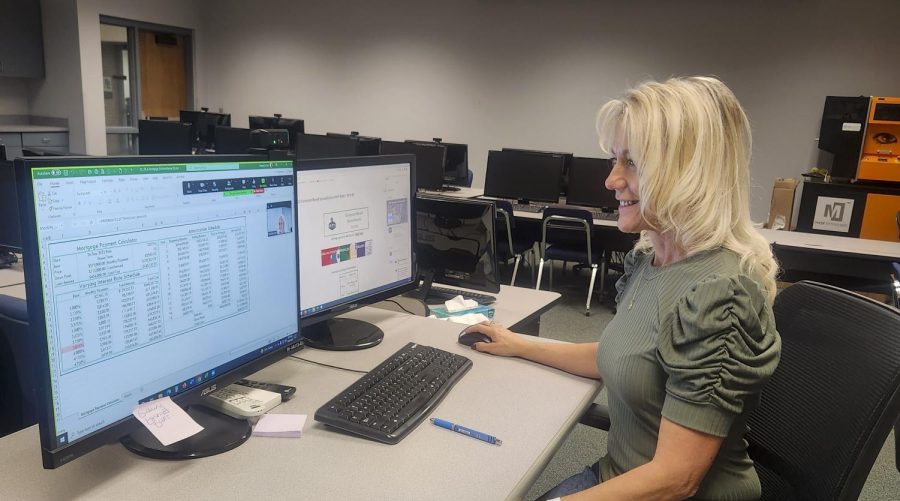


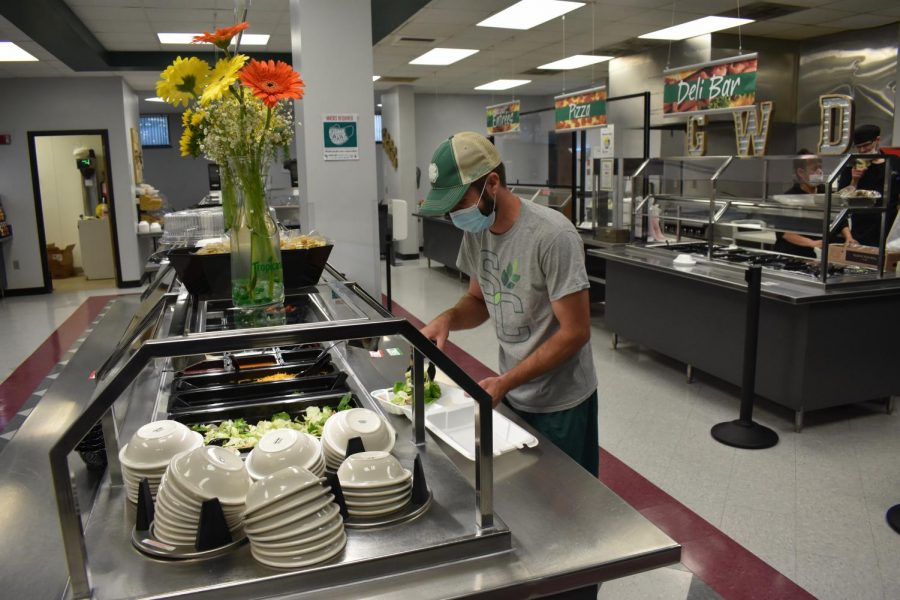


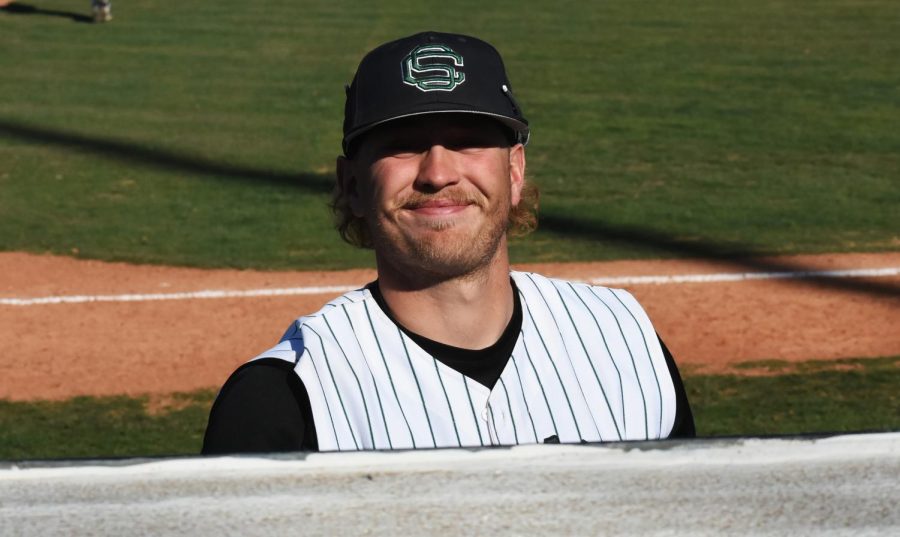

![The sophomores were recognized on the field instead of walking across the stage during their doubleheader. They received their diplomas and a picture of themselves playing during their career at Seward. [Pictured left to right are Dylan Day, Reed Thomas, Jase Schneider, Mason Martinez, Gannon Hardin, Brody Boisvert, and Zach Walker]](https://crusadernews.com/wp-content/uploads/2022/05/WEBDSC_0275-900x454.jpg)
